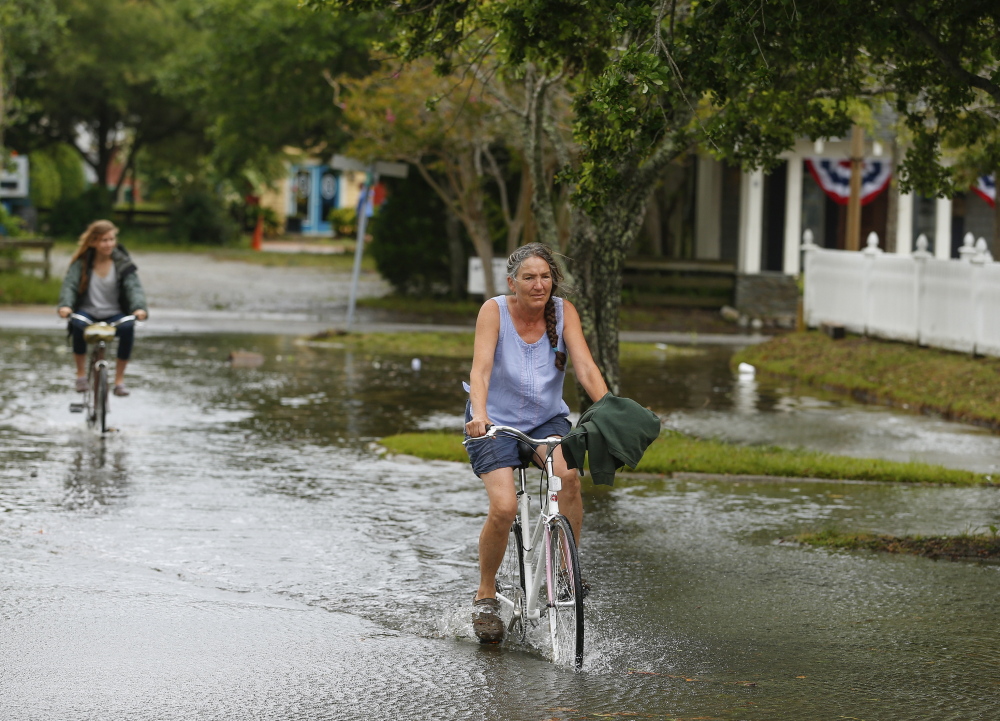RALEIGH, N.C. — North Carolina’s coast will see more frequent and more destructive floods at high tide over the next 30 years, several studies say – even on mild, sunny days – as rising sea levels shove the Atlantic Ocean higher onto our shores.
A 2014 report from the Union of Concerned Scientists warns that minor tidal flooding will become a near-daily, “incessant,” event in the Wilmington area by 2045.
And worse flooding is expected for the Outer Banks, where the sea level is rising faster. Today it takes a tropical storm or nor’easter to kick up serious floods that can damage buildings and endanger lives on the low-lying barrier islands. But this is changing.
The Union of Concerned Scientists study says these disruptive, moderate-to-major floods will become more likely in calm weather as well, during cyclical “spring” tides and “king” tides when the sun and moon align to produce extreme high tides.
That’s because the seas are expected to rise by as much as 12 inches in the next 30 years, lifting high tide that much higher on the northern Outer Banks.
“If you just raise the sea level by that much, it’s going to push the water deeper inland,” said Melanie Fitzpatrick, a climate scientist and co-author of the Union of Concerned Scientists study.
Old Dominion University and the National Oceanic and Atmospheric Administration published similar reports last year, also pointing to increased tidal flooding as a consequence of a warming climate that is causing the seas to rise.
More flooding will close roads, clog storm sewers and damage streets and other public structures that aren’t made to hold up against inundation and salt-water exposure, NOAA said. Even moderate floods can hurt businesses, isolate neighborhoods and disrupt transportation.
When the North Carolina Coastal Resources Commission’s advisory science panel aired its new forecast for sea-level rise last month, the report made note of the accelerated tidal flooding.
Send questions/comments to the editors.



Success. Please wait for the page to reload. If the page does not reload within 5 seconds, please refresh the page.
Enter your email and password to access comments.
Hi, to comment on stories you must . This profile is in addition to your subscription and website login.
Already have a commenting profile? .
Invalid username/password.
Please check your email to confirm and complete your registration.
Only subscribers are eligible to post comments. Please subscribe or login first for digital access. Here’s why.
Use the form below to reset your password. When you've submitted your account email, we will send an email with a reset code.